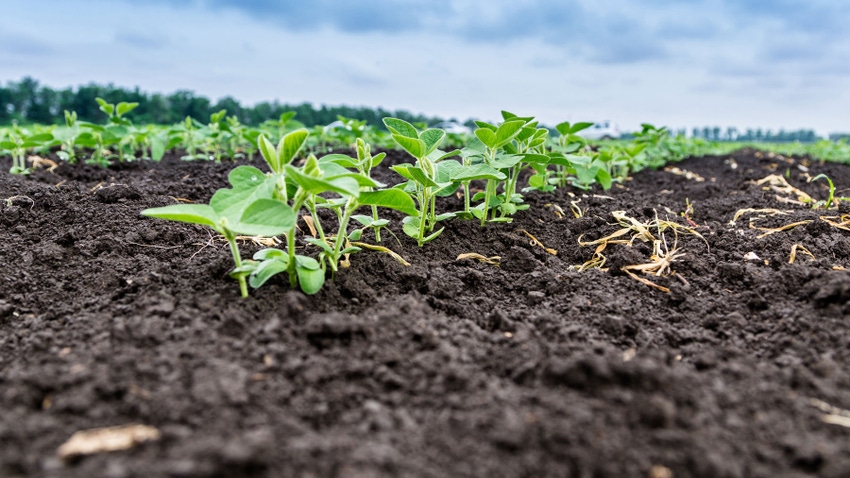June 27, 2023

by Mike Staton
While thin soybean stands can occur for a variety of reasons — such as disease and insect damage — drought conditions this year have made soybean emergence a challenge, leaving many producers questioning if remedial action is warranted and, if so, what specific steps to take.
The most important step is to detect emergence problems and identify potentially thin stands as early as possible. The next step is to identify what caused the poor emergence. This is important as it determines if the problem needs to be addressed and what to do.
Uneven or slow emergence because of variable planting depth, crusting or dry soil may not require any action if rain is forecast. However, if rain is not predicted, rotary hoeing may be required to break up a soil crust.
Estimating your existing and potential stand is the next step. There are two accepted ways for estimating stands — counting plants in a defined area such as a hula hoop and counting plants in a length of row equal to a thousandth of an acre.
While both work, MSU Extension soybean experts prefer the thousandth-of-an-acre method for wider row widths.

To use the information in Table 1 to estimate the number of soybean plants per acre in 30-inch rows, count the number of plants in 17 feet, 5 inches of row at 10 random locations in the field.
Multiply the average count for the 10 locations by 1,000 to get plants per acre. For example, if the average count in the sampled rows was 108, the population would be 108,000 emerged plants per acre.

To use the hula hoop method, toss the hoop in 10 random locations in the field and record the number of emerged plants within the hoop at each location. Calculate the average and multiply it by the conversion factor corresponding to the diameter of the hoop you are using (larger diameter hoops are recommended).
For example, if the diameter of the hoop is 36 inches and the average number of emerged plants is 16, then 105,856 plants per acre have emerged (16 × 6,616). If the diameter of your hula hoop isn’t listed in Table 2, you can calculate the conversion factor with the following equation:
Conversion factor = 43,560 ÷ [3.14 × (the inside hoop diameter in inches ÷ 2)2 ÷144]
Profit potential
Data collected from 66 on-farm soybean planting rate trials shows that final stands of 65,000 plants per acre can produce surprisingly high soybean yields. If more than 65,000 plants per acre are counted and the stand is relatively uniform, the field has the potential to produce high yields.
If emergence counts are lower than 65,000 plants per acre, there are three possible options for dealing with thin soybean stands — leave the existing stand alone, keep the existing stand and fill-in with additional seed, or till the field and start over.
Leaving the existing stand alone and managing it is the best choice if you have at least 65,000 emerged plants per acre. This is because soybean plants have a large capacity to branch out and produce more pods per plant when given space.
However, additional time and effort may be required to control weeds in thin soybean stands. This is especially true early in the season before the plants are large enough to shade the soil. The use of effective residual herbicide mixtures having two sites of action and applying effective postemergence herbicides when weeds are small are essential practices.
Keeping the existing stand and filling-in with additional seed is usually a good choice when stands are below 65,000 plants per acre. Planters set up for wide rows are preferred over drills as one of the keys to success is reducing damage to the existing seedlings.
Whenever possible, use the same variety, or at least a variety from the same maturity group, and add enough seed to arrive at a final stand of about 100,000 plants per acre. Producers that use this method need to watch the fields closely at harvesttime.
Situations have occurred where the plants from the first planting date matured significantly earlier than those from the second planting date, and the pods opened before harvest leading to large harvest losses.
Tilling up thin stands and completely replanting the field is rarely recommended. The main reasons for this are the later planting date reduces yield potential and additional costs are incurred.
A version of this article was previously published in the summer 2022 issues of the Michigan Soybean News.
Staton is a MSU Extension field crop educator.
You May Also Like




